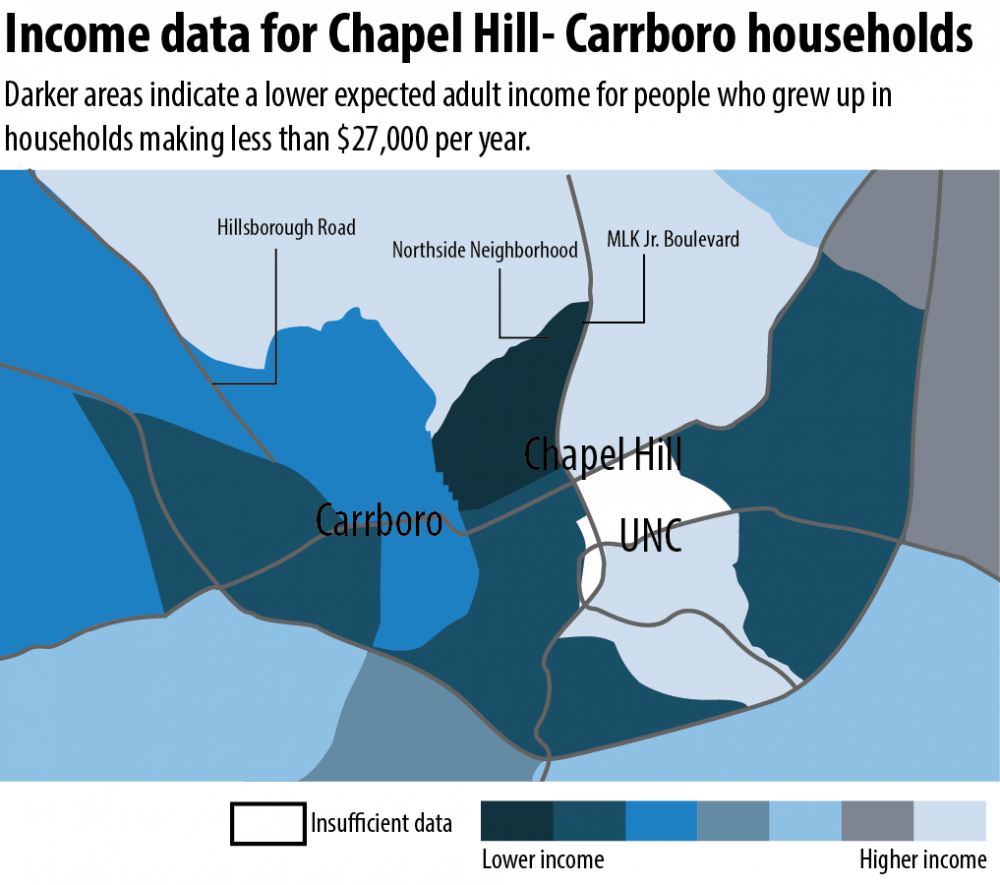Seils pointed out that Orange County provides services to underprivileged populations in order to address cyclical poverty.
“The county has a lot of social services that it provides for children, for seniors, for folks who have limited means or disabilities," he said. "So a lot of that programming is done at the countywide level.”
But for the town of Carrboro specifically, Seils pointed to their affordable housing program as having an impact on alleviating these income disparities.
“A couple of years ago, the Board of Aldermen adopted an affordable housing goals and strategies document," he said. "And it lays out what our goals are for the community in terms of developing more affordable housing and what strategies we’re going to use to get there. But I think that’s where our main focus has been over the last few years.”
Sarah Viñas, assistant director of the Chapel Hill Office for Housing and Community, commented on some of the factors that cause this geographic disparity.
“I think there are a variety of factors that impact upward mobility in Chapel Hill,” Viñas said. “Wages are certainly one of them, which is not something that is unique to Chapel Hill in any way. People working in a low-wage job tend to have more challenges increasing their household income and being upwardly mobile."
Viñas also spoke to the disproportionate impact of geographic income on minorities.
“There is also the intersectionality of multiple factors of race and education and family wealth,” Viñas said. “And Chapel Hill, like a lot of communities across the country, is facing challenges with an achievement gap, which the school system is working on addressing.”
The 2017 Racial Equity Report Card by the Youth Justice Project, a nonprofit that researches youth inequality, revealed that white students from third to eighth grade enrolled in Chapel Hill-Carrboro City Schools were 2.9 times more likely to score ‘Career and College Ready’ on end-of-grade exams than Black students in the same grades.
“Our students in our school systems that are people of color are not having the same outcomes as their white peers,” Viñas said. “And that impacts their long-term chances of upward mobility.”
Certain neighborhoods, such as the Northside neighborhood located west of MLK Jr. Blvd., were identified as one of the worst areas in Chapel Hill for poverty reduction, according to the CES report. In addition to having historically low-income residents, many students have come to the neighborhood, driving up the cost of living.
“The Northside neighborhood is historically an African-American neighborhood,” Viñas said. “Many of the longtime residents work for the University or the hospital system, and that has tended to be a lower income to middle class neighborhood. It’s experienced a lot of changes over the last two decades in terms of more students coming into that neighborhood.”
To get the day's news and headlines in your inbox each morning, sign up for our email newsletters.
Viñas says as the influx of students continues to exacerbate the affordable housing crisis, one of the Town’s primary methods of aiding poverty reduction continues to be through affordable housing projects.
“The Town has been pretty intentional about trying to integrate affordable housing within neighborhoods because we know the outcomes are better for people when they’re in diverse, economically and otherwise, diverse neighborhoods,” Viñas said. “So, public housing for example is interspersed throughout the community, as well as the other affordable housing that the Town has supported that has been developed by non-profit providers.”
While the towns of Chapel Hill and Carrboro offer affordable housing programs, the majority of services for underprivileged populations are offered at the county level.
The Daily Tar Heel reached out to members of the Chapel Hill Town Council and several Orange County officials, but none responded to a request for comment.
@MichaelJTaffe
city@dailytarheel.com



